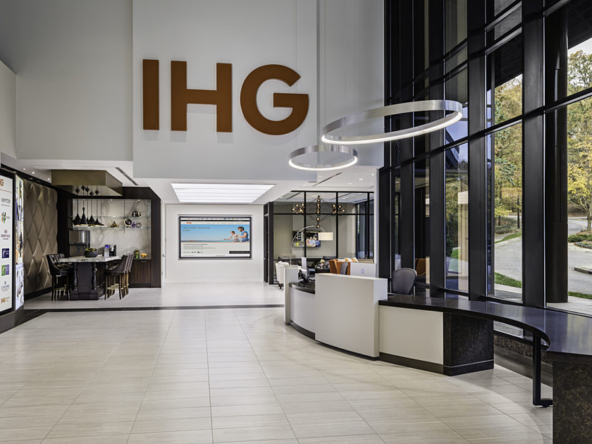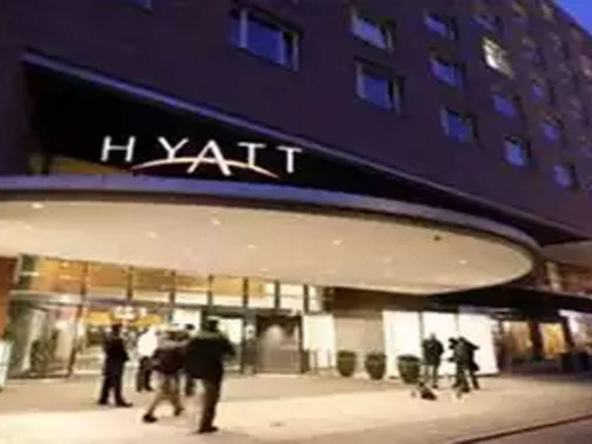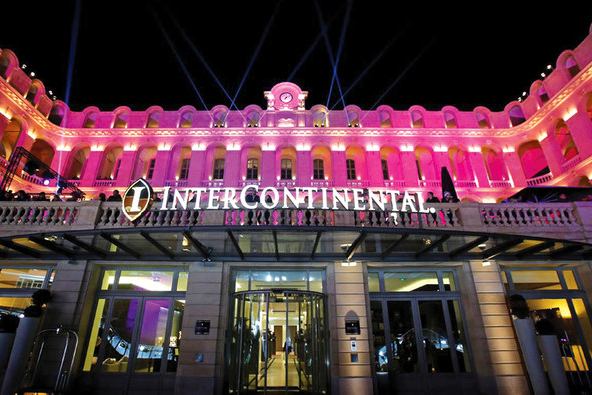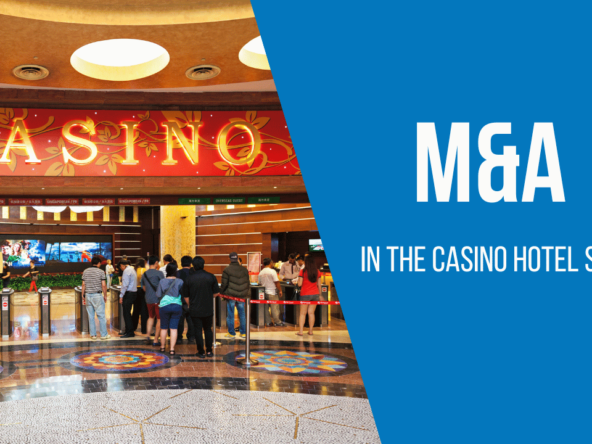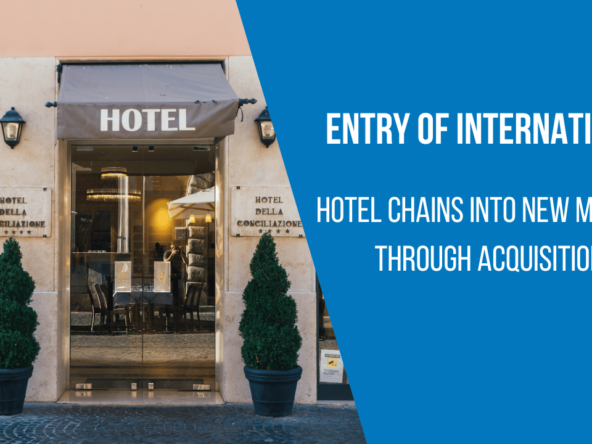- Square Feet
- Square Meters
HotelMergers
The M&A Experts
The hotel industry is a dynamic and competitive sector, constantly evolving to meet the changing needs and preferences of travellers. In this landscape, mergers and acquisitions (M&A) have become a strategic tool for hotel companies to expand their market presence, achieve economies of scale, and enhance their competitive advantage.



Why Choose Hotel Mergers As Your Hotel M&A Partner

Strategic Planning
Hotel mergers and acquisitions (M&A) are complex transactions that require careful strategic planning to ensure their success. Before initiating an M&A deal, hotel companies must undertake a comprehensive strategic planning process. The strategic planning phase lays the foundation for the entire M&A process, helping hotel companies identify their objectives, assess market conditions, evaluate synergies, and determine the financial resources required.
Strategic planning in hotel M&A involves formulating a comprehensive roadmap that guides the entire transaction. It provides a clear vision and direction for the acquiring company, enabling it to make informed decisions, maximize value creation, and achieve its desired outcomes. This planning phase sets the stage for successful execution and integration, ensuring the long-term viability and profitability of the merged entity.
Key Considerations in Strategic Planning
Strategic planning forms the bedrock of successful hotel mergers and acquisitions. By defining clear objectives, conducting thorough market analysis, evaluating synergies, assessing financial viability, allocating resources, assessing risks, and engaging in effective communication and stakeholder management, hotel companies can position themselves for a seamless and value-driven M&A transaction. Strategic planning ensures that the acquiring company can navigate the complexities of the M&A process and maximize the long-term benefits of the merged entity, ultimately driving growth, profitability, and competitive advantage in the dynamic hospitality industry.
- Objective Identification
- Market Analysis
- Synergy Evaluation
- Financial Assessment
- Resource Allocation
- Risk Assessment
- Communication & Stakeholder Management
The first step in strategic planning is to define the objectives of the M&A transaction. This could include expanding market presence, diversifying product offerings, gaining access to new geographic regions, achieving economies of scale, or enhancing competitive advantage. Clear and measurable objectives help align the decision-making process and guide subsequent steps.
Conducting a thorough market analysis is crucial to understand industry dynamics, trends, and competitive landscapes. This involves examining key performance indicators, market share, customer preferences, technological advancements, and regulatory factors. The market analysis provides insights into market opportunities, potential risks, and the competitive positioning of both the acquiring company and the target.
Assessing potential synergies is a critical aspect of strategic planning. Synergies can be realized in various areas, including operations, marketing, distribution channels, cost efficiencies, brand value, cross-selling opportunities, and customer loyalty. Identifying and quantifying synergies helps justify the value proposition of the M&A transaction and its potential impact on the bottom line.
A comprehensive financial assessment is essential to determine the financial feasibility of the M&A transaction. This involves evaluating the financial performance of both the acquiring company and the target, analyzing their revenue streams, profitability, debt structure, and cash flow generation. Financial due diligence helps identify any potential risks or financial challenges that may impact the transaction’s viability.
Strategic planning also involves determining the necessary financial resources, human capital, and operational capabilities required to execute the M&A transaction successfully. This includes assessing the acquiring company’s financial capacity, securing financing if necessary, and considering the integration costs and resource allocation needed for post-merger integration.
An in-depth risk assessment is crucial to identify and mitigate potential risks and challenges associated with the M&A transaction. This involves analyzing legal and regulatory compliance, market risks, operational risks, cultural integration challenges, and potential employee or customer resistance. Understanding the risks allows the acquiring company to develop risk mitigation strategies and contingency plans.
Effective communication and stakeholder management are vital in the strategic planning phase. This includes clear and transparent communication with employees, customers, suppliers, shareholders, and regulatory bodies. Proactive stakeholder management helps manage expectations, address concerns, and ensure a smooth transition throughout the M&A process.
Identifying Targets
Identifying suitable acquisition targets is a crucial step in the process of hotel mergers and acquisitions (M&A). This phase requires meticulous research, market analysis, and strategic thinking to pinpoint potential targets that align with the acquiring company’s objectives and offer opportunities for strategic growth. This may involve conducting extensive market research, analyzing industry trends, and engaging with financial advisors or investment banks specializing in the hospitality sector. The selection process is driven by factors such as geographic expansion, brand compatibility, market positioning, and financial performance.

Key Considerations in Identifying Targets
Understanding the Importance of Target Identification
The success of a hotel M&A transaction heavily depends on selecting the right acquisition targets. Identifying suitable targets ensures compatibility in terms of geographic expansion, brand synergy, market positioning, customer base, and financial performance. The target identification process sets the foundation for the subsequent due diligence, valuation, and negotiation stages, ultimately determining the potential for value creation and successful integration.
- Strategic Alignment
- Market Research and Analysis
- Financial Performance
- Brand and Market Positioning
- Operational Considerations
- Cultural Fit
- Expert Advice and Networking
The first step in target identification is to align the acquisition strategy with the acquiring company’s overall strategic objectives. This involves determining whether the focus is on geographical expansion, brand diversification, market dominance, or synergy creation. Understanding the strategic direction allows the acquiring company to define specific criteria and filters for identifying potential targets.
Conducting thorough market research and analysis is crucial to identify potential targets. This includes analyzing market trends, growth prospects, demand-supply dynamics, competitive landscapes, and customer preferences. Market research helps identify gaps in the market, emerging opportunities, and areas where the acquiring company can leverage its competitive advantage.
Evaluating the financial performance of potential targets is a critical aspect of target identification. Key financial metrics to consider include revenue growth, profitability, debt levels, cash flow generation, and asset quality. Comparative financial analysis allows the acquiring company to assess the financial health and potential value of the target, identifying targets that offer attractive return on investment (ROI) potential.
Assessing the brand and market positioning of potential targets is essential for ensuring compatibility and synergy. This involves analyzing brand reputation, customer loyalty, market share, and competitive advantages. A target with a strong brand and market presence can enhance the acquiring company’s overall market position and customer reach.
Understanding the operational aspects of potential targets is vital for assessing their compatibility and integration feasibility. This includes evaluating their operational efficiency, cost structure, distribution channels, technological capabilities, and human resources. Identifying targets with complementary operational strengths and areas for improvement can drive synergies and operational efficiencies post-acquisition.
Cultural compatibility is often overlooked but plays a significant role in the success of hotel mergers and acquisitions. Assessing the target company’s culture, values, management style, and employee dynamics helps determine whether there will be a smooth integration process and minimal resistance from employees and stakeholders. A strong cultural fit promotes harmonious integration and collaboration.
Seeking expert advice from financial advisors, investment banks, and industry specialists can greatly facilitate target identification. These professionals have access to industry databases, market intelligence, and extensive networks that can help identify potential targets that may not be publicly available. Engaging in industry conferences, events, and networking opportunities can also provide valuable insights and connections.
- Direct Approaches
- Industry Research and Monitoring
- M&A Advisors and Investment Banks
- Market Scanning and Screening Tools
The acquiring company can directly approach potential targets through proactive outreach. This may involve confidential discussions, initial meetings, and the exchange of non-disclosure agreements. Direct approaches are suitable when there is a specific target in mind or when the acquiring company wants to explore opportunities in a particular market segment.
Regular monitoring of industry news, market reports, and industry publications can uncover potential targets. This approach involves staying informed about market developments, financial performance, and potential strategic moves by competitors or companies facing financial challenges. Industry research can help identify distressed assets, underperforming hotels, or strategic partnerships.
Engaging M&A advisors and investment banks specialized in the hospitality sector can significantly aid in target identification. These professionals possess industry-specific expertise, extensive networks, and access to proprietary databases. They can provide valuable insights, conduct market scans, and present potential targets that align with the acquiring company’s strategic objectives.
Utilizing advanced market scanning and screening tools can help identify potential targets based on predefined criteria. These tools allow the acquiring company to filter and evaluate potential targets based on various parameters, such as location, brand, financial performance, or market share. Automated data analysis expedites the target identification process and provides a broader perspective on the market landscape.
Methodologies for Identifying Targets
Identifying suitable acquisition targets is a critical step in the hotel mergers and acquisitions process. By strategically aligning the acquisition objectives, conducting thorough market research and analysis, assessing financial performance, evaluating brand and market positioning, considering operational factors, and emphasizing cultural fit, hotel companies can identify targets that offer strategic growth opportunities. Leveraging expert advice, industry research, and advanced screening tools can enhance the effectiveness of target identification, setting the stage for a successful M&A transaction that drives value creation and long-term success in the dynamic hospitality industry.
Due Diligence
The due diligence process is a critical phase and plays a pivotal role in the success of hotel mergers and acquisitions (M&A). It involves a comprehensive examination and evaluation of the target company’s financial, legal, operational, and commercial aspects. Due diligence provides the acquiring company with a detailed understanding of the target’s assets, liabilities, contracts, intellectual property, regulatory compliance, employee structure, customer base, and competitive landscape. This article aims to provide a detailed and elaborate guide to the due diligence process in hotel M&A, emphasizing its significance and key considerations.
Due diligence helps mitigate risks, uncover potential issues, and inform decision-making. It allows the acquiring company to verify the target’s claims, identify any red flags or hidden liabilities, assess the value proposition of the transaction, and determine the appropriate purchase price. Due diligence also helps the acquiring company develop integration plans and post-acquisition strategies, ensuring a smooth transition and maximizing the value of the merged entity.

Key Considerations in Due Diligence
The due diligence process in hotel mergers and acquisitions is a comprehensive and essential step that enables the acquiring company to make informed decisions and mitigate risks. By conducting financial, legal, operational, commercial, risk, human resources, and IT due diligence, hotel companies can uncover potential issues, validate financial and operational claims, assess compliance, and develop integration strategies. Due diligence provides a solid foundation for successful M&A transactions, ensuring a smooth transition, maximizing value creation, and setting the stage for long-term growth and profitability in the dynamic hospitality industry.
- Financial Due Diligence
- Legal Due Diligence
- Operational Due Diligence
- Commercial Due Diligence
- Risk Assessment
- Human Resources Due Diligence
- Information Technology Due Diligence
Financial due diligence involves a detailed analysis of the target company’s financial statements, historical financial performance, cash flow, and financial projections. This includes assessing revenue sources, cost structures, profitability, debt levels, working capital requirements, and tax obligations. Financial due diligence aims to validate the target’s financial health, identify potential risks, and evaluate the financial impact of the transaction.
Legal due diligence involves a comprehensive examination of the target company’s legal and regulatory compliance. This includes reviewing contracts, licenses, permits, leases, litigation history, intellectual property rights, labor agreements, and any legal disputes. Legal due diligence helps identify potential legal risks, compliance issues, and contractual obligations that may impact the transaction or the post-acquisition integration process.
Operational due diligence focuses on evaluating the target company’s operational capabilities, processes, systems, and infrastructure. This includes assessing the quality of the target’s physical assets, evaluating supply chain arrangements, understanding customer relationships, and evaluating the efficiency of operations. Operational due diligence helps identify any operational gaps, redundancies, or integration challenges that need to be addressed post-acquisition.
Commercial due diligence involves analyzing the target company’s market positioning, customer base, competitive landscape, and growth prospects. This includes assessing market trends, customer preferences, competitive advantages, pricing strategies, distribution channels, and sales and marketing effectiveness. Commercial due diligence provides insights into the target’s market potential, growth opportunities, and competitive challenges.
A thorough risk assessment is a critical component of due diligence. It involves identifying and evaluating potential risks associated with the target company and the M&A transaction itself. This includes assessing market risks, regulatory risks, operational risks, legal risks, financial risks, reputational risks, and environmental risks. The risk assessment helps the acquiring company understand and quantify potential risks, allowing for informed decision-making and the development of risk mitigation strategies.
Human resources due diligence focuses on understanding the target company’s organizational structure, employee contracts, compensation plans, employee morale, talent retention, and key personnel. This includes evaluating employee benefits, cultural fit, and potential issues related to labor unions or employment disputes. Human resources due diligence provides insights into the target’s human capital, potential integration challenges, and strategies for retaining key talent post-acquisition.
Information technology (IT) due diligence involves evaluating the target company’s IT infrastructure, systems, cybersecurity measures, data privacy compliance, software applications, and IT contracts. This assessment helps identify any IT-related risks, vulnerabilities, or integration challenges. IT due diligence is crucial in today’s digital age, where IT systems and data management play a critical role in hotel operations.
Valuation and Negotiation
Based on the due diligence findings, the acquirer determines the target company’s valuation. Valuation methods may include the market approach (comparable transactions), income approach (discounted cash flows), or asset-based approach (net asset value). Once the valuation is established, negotiations commence, focusing on key terms such as purchase price, payment structure, post-transaction management, and governance arrangements. Valuation and negotiation are critical stages in the process of hotel mergers and acquisitions (M&A). Valuation determines the financial worth of the target company, while negotiation involves reaching mutually beneficial agreements on deal terms, purchase price, and post-acquisition arrangements. These stages require in-depth analysis, financial expertise, strategic thinking, and effective communication to ensure a fair and successful transaction. This article aims to provide a detailed and elaborate guide to valuation and negotiation in hotel M&A, emphasizing their significance and key considerations.

Key Considerations in Valuation
Understanding Valuation in Hotel Mergers and Acquisitions
Valuation is the process of determining the economic value of a hotel company or its assets. It serves as a basis for setting the purchase price and assessing the potential return on investment (ROI) for the acquiring company. Valuation involves analyzing financial statements, market conditions, growth prospects, industry trends, comparable transactions, and synergy potential. Accurate valuation is crucial for both the acquiring and target companies to ensure a fair and equitable deal.
- Financial Analysis
- Comparable Transactions
- Asset Valuation
- Market Conditions and Growth Prospects
- Synergy Potential
Financial analysis is a fundamental component of valuation. It involves assessing the target company’s historical financial performance, revenue streams, profitability, cash flow, debt levels, and working capital. Financial ratios, such as price-to-earnings (P/E), price-to-sales (P/S), and return on investment (ROI), help determine the appropriate valuation multiple for the hotel company.
Examining comparable transactions within the hotel industry provides valuable benchmarks for valuation. This involves researching and analyzing similar M&A deals, assessing their purchase prices, and comparing them with the target company’s financials and market positioning. Comparable transactions provide insights into market trends, valuation multiples, and market expectations.
Hotels possess various tangible and intangible assets that contribute to their value. Tangible assets include real estate, buildings, fixtures, furniture, and equipment. Intangible assets include the hotel’s brand, customer relationships, intellectual property, and management contracts. Valuing these assets accurately requires expertise in real estate appraisal, brand valuation, and assessing intangible assets.
Evaluating market conditions and growth prospects is vital for determining a hotel company’s valuation. This involves assessing the demand-supply dynamics, market growth rate, potential market disruptions, and emerging trends in the hotel industry. Understanding the market landscape helps determine the potential for revenue growth and future profitability.
Synergies play a significant role in valuing hotel M&A transactions. Synergies can arise from operational efficiencies, cost savings, cross-selling opportunities, market expansion, and enhanced brand value. Assessing the potential synergies between the acquiring and target companies helps determine the additional value that can be derived from the merger.
- Deal Structure
- Purchase Price
- Payment Terms
- Representations and Warranties
- Post-Acquisition Arrangements
Determining the deal structure is a crucial aspect of negotiation. This includes deciding whether the transaction will be structured as a stock purchase, asset purchase, merger, or joint venture. The deal structure impacts the legal, tax, and financial implications for both the acquiring and target companies.
Negotiating the purchase price is a significant aspect of the M&A deal. Both the acquiring and target companies will have their own perspectives on the valuation, and the negotiation process aims to reach a mutually agreeable price. Various factors, such as financial performance, growth prospects, market conditions, synergies, and the competitive landscape, influence the negotiation of the purchase price.
Negotiating the payment terms involves determining how the purchase price will be paid and the timing of payments. Payment terms can include cash payments, stock consideration, earn-outs, or a combination of these. The negotiation process aims to find a balance that satisfies both parties’ financial objectives and risk considerations.
Representations and warranties are assurances provided by the target company regarding the accuracy of its financial statements, legal compliance, contractual obligations, and other material information. Negotiating the representations and warranties involves defining the scope, duration, and limitations of these assurances to protect the acquiring company’s interests.
Negotiating post-acquisition arrangements involves discussing and finalizing key operational and integration aspects. This includes management transitions, employee retention, cultural integration, strategic initiatives, and any other agreements necessary to ensure a smooth transition and maximize the value of the merged entity.
Key Considerations in Negotiation
Understanding Negotiation in Hotel Mergers and Acquisitions
Negotiation is the process of reaching mutually acceptable agreements between the acquiring and target companies. It involves discussing and finalizing the deal structure, purchase price, payment terms, representations and warranties, post-acquisition arrangements, and other key provisions. Successful negotiation requires effective communication, negotiation skills, understanding of the parties’ interests, and the ability to find win-win solutions.
Regulatory Approvals
Identifying suitable acquisition targets is a crucial step in the process of hotel mergers and acquisitions (M&A). This phase requires meticulous research, market analysis, and strategic thinking to pinpoint potential targets that align with the acquiring company’s objectives and offer opportunities for strategic growth. This may involve conducting extensive market research, analyzing industry trends, and engaging with financial advisors or investment banks specializing in the hospitality sector. The selection process is driven by factors such as geographic expansion, brand compatibility, market positioning, and financial performance.
The success of a hotel M&A transaction heavily depends on selecting the right acquisition targets. Identifying suitable targets ensures compatibility in terms of geographic expansion, brand synergy, market positioning, customer base, and financial performance. The target identification process sets the foundation for the subsequent due diligence, valuation, and negotiation stages, ultimately determining the potential for value creation and successful integration.

Key Considerations in Regulatory Approvals
Understanding Regulatory Approvals in Hotel Mergers and Acquisitions
Regulatory approvals are permissions or clearances required from government agencies or regulatory bodies to proceed with the M&A transaction. These approvals ensure that the transaction aligns with legal requirements, safeguards competition, protects consumers, and addresses any potential concerns related to market concentration or anticompetitive behavior. Regulatory approvals may vary across jurisdictions and can involve multiple agencies, making it crucial for acquiring companies to navigate the regulatory landscape effectively.
- Antitrust and Competition Laws
- Ownership and Foreign Investment Restrictions
- Financial and Securities Regulations
- Data Protection and Privacy Regulations
- Employment and Labor Regulations
- Environmental and Regulatory Compliance
Antitrust and competition laws aim to prevent anticompetitive practices, maintain market competition, and protect consumer interests. Acquiring companies must evaluate the potential impact of the M&A transaction on market concentration, market share, and competition within the hotel industry. In some jurisdictions, transactions that exceed certain thresholds may require pre-merger notification or approval from competition authorities.
Many countries have regulations that restrict foreign ownership or investment in specific industries, including hospitality. Acquiring companies must assess and comply with these restrictions to ensure a smooth transaction. This may involve obtaining approvals from relevant regulatory bodies or complying with specific ownership structures, such as joint ventures or strategic partnerships, to navigate foreign investment restrictions.
M&A transactions in the hospitality industry often involve financial considerations, such as the issuance of securities or the transfer of assets. Acquiring companies must comply with applicable financial and securities regulations, which may include filing disclosure documents, obtaining approvals from regulatory bodies, or complying with specific requirements related to the transfer of financial assets
Hotel M&A transactions involve the transfer of customer data, employee data, and other sensitive information. Acquiring companies must consider data protection and privacy regulations to ensure compliance and safeguard the privacy rights of individuals. This may involve obtaining consent, implementing data transfer agreements, or adhering to specific data protection frameworks and regulations.
M&A transactions often have implications for employees, including potential redundancies, changes in employment contracts, or transfers of employment. Acquiring companies must comply with applicable employment and labor regulations, which may include providing employee notices, conducting consultations with employee representatives, or obtaining approvals from labor authorities.
Hotel properties are subject to various environmental regulations and permits. Acquiring companies must evaluate the target company’s environmental compliance, including waste management, energy efficiency, permits for operations, and adherence to environmental standards. Ensuring compliance with environmental regulations is crucial to avoid potential legal liabilities and reputational risks.
- Early Assessment and Due Diligence
- Engaging Legal Experts
- Proactive Communication with Regulatory Bodies
- Timely Filing and Compliance
- Negotiating Remedies, if Required
Conducting comprehensive due diligence early in the M&A process is crucial to identify potential regulatory hurdles and compliance requirements. This includes reviewing applicable laws and regulations, assessing potential impacts on competition, evaluating foreign investment restrictions, and identifying any specific approvals or notifications required.
Acquiring companies should engage legal experts with expertise in the hospitality industry and regulatory matters to navigate the complex regulatory landscape. Legal counsel can provide guidance on regulatory requirements, assist with preparing necessary documentation, coordinate with regulatory bodies, and ensure compliance throughout the approval process.
Establishing proactive communication with relevant regulatory bodies is essential. Acquiring companies should initiate discussions, seek guidance, and keep regulatory authorities informed about the M&A transaction. This can help address any concerns, clarify requirements, and expedite the approval process.
Acquiring companies must adhere to filing deadlines and comply with all requirements outlined by regulatory authorities. This may involve submitting applications, disclosure documents, reports, or any other necessary documentation within specified timelines. Timely and accurate compliance demonstrates the acquiring company’s commitment to regulatory standards.
In cases where regulatory authorities express concerns about the transaction’s potential impact on competition, acquiring companies may need to negotiate remedies to address these concerns. Remedies could include divestitures, behavioral commitments, or other measures to alleviate antitrust or competition concerns
Key Considerations in Navigating the Regulatory Approval Process
Navigating the Regulatory Approval Process
Regulatory approvals are a critical component of the hotel mergers and acquisitions process, ensuring compliance with legal requirements and safeguarding competition and consumer interests. Acquiring companies must carefully navigate the regulatory landscape, considering antitrust laws, foreign investment restrictions, financial and securities regulations, data protection and privacy laws, employment and labor regulations, and environmental compliance. By conducting thorough due diligence, engaging legal experts, maintaining proactive communication, and ensuring timely compliance, acquiring companies can navigate the regulatory approval process successfully, mitigating legal risks and facilitating seamless transactions in the dynamic hospitality industry.
Integration Planning
Successful integration is vital for realizing the expected synergies and maximizing the value of the M&A transaction. Integration planning is a crucial phase in the process of hotel mergers and acquisitions (M&A). It involves the strategic alignment of people, processes, systems, and cultures to create a unified and efficient organization. Effective integration planning is essential to capitalize on synergies, minimize disruptions, retain key talent, optimize operations, and maximize the overall value of the combined entity. This article aims to provide a detailed and elaborate guide to integration planning in hotel M&A, highlighting its significance and key considerations.

Key Considerations in Integration Planning
The Importance of Integration Planning
Integration planning is a critical stage that determines the success of a hotel M&A transaction. It focuses on merging two separate entities into a cohesive organization, harmonizing operations, eliminating redundancies, leveraging economies of scale, and capturing the synergistic benefits outlined during the deal. Proper integration planning ensures a smooth transition, minimizes disruptions to daily operations, retains customer loyalty, and maximizes the potential for long-term growth and profitability.
- Establishing Clear Objectives and Priorities
- Cultural Integration
- Human Resources Integration
- Streamlining Operations
- IT Systems Integration
- Customer Experience and Brand Integration
- Supplier and Contract Integration
- Risk Management and Compliance
The integration planning process begins by establishing clear objectives and priorities for the merged organization. This includes identifying synergy opportunities, determining the desired operating model, defining key performance indicators, and aligning strategic goals. Clear objectives provide a roadmap for the integration process and help guide decision-making.
Hotel M&A transactions involve blending different organizational cultures. It is crucial to assess and understand the cultural dynamics of both the acquiring and target companies. Cultural integration involves aligning values, communication styles, leadership approaches, and employee engagement strategies. Fostering a collaborative and inclusive culture helps facilitate a smooth integration and creates a harmonious work environment.
Integration planning should encompass human resources considerations, including talent retention, workforce restructuring, compensation and benefits harmonization, and employee communication. Identifying key talent and implementing retention strategies ensures the preservation of valuable expertise. Effective communication and change management initiatives help alleviate employee concerns and maintain productivity during the integration process.
Integration planning involves optimizing operations to achieve operational efficiencies and cost savings. This may include consolidating back-office functions, standardizing processes, rationalizing the supply chain, and leveraging economies of scale. Streamlining operations eliminates duplication, improves resource allocation, and enhances overall operational performance.
IT systems play a crucial role in the hospitality industry, and integration planning should address the harmonization of technology infrastructure, software applications, data management, and cybersecurity. Evaluating compatibility, identifying integration challenges, and developing a roadmap for IT integration ensures seamless communication, data transfer, and operational continuity.
Integration planning should focus on maintaining and enhancing the customer experience. This includes aligning brand positioning, integrating loyalty programs, and ensuring consistent service standards across all properties. Retaining customer loyalty and trust during the integration process is vital for the long-term success of the merged organization.
Integration planning involves reviewing and renegotiating contracts with suppliers, vendors, and business partners. Assessing existing contracts, identifying opportunities for cost savings and synergies, and ensuring seamless transitions in the supply chain are crucial steps. Effective contract integration ensures continued business relationships and optimal terms and conditions.
Integration planning should address risk management and compliance considerations. This involves conducting thorough due diligence, assessing legal and regulatory requirements, evaluating potential liabilities, and developing strategies to mitigate risks. Ensuring compliance with legal, regulatory, and industry standards safeguards the reputation and financial stability of the merged organization.
- Cross-Functional Integration Teams
- Timely Communication and Change Management
- Continual Evaluation and Adjustment
Establish cross-functional integration teams representing key functional areas to drive the integration process. These teams should include representatives from HR, finance, operations, IT, marketing, and legal, among others. Collaboration and effective communication across teams facilitate the sharing of best practices and ensure a comprehensive integration strategy.
Effective communication with employees, customers, suppliers, and other stakeholders is crucial throughout the integration process. Transparent and timely communication helps manage expectations, address concerns, and foster a sense of stability and trust. Change management initiatives, such as training programs and employee engagement activities, support a smooth transition and promote acceptance of organizational changes.
Integration planning is an iterative process that requires continuous evaluation and adjustment. Regularly assess the progress of integration efforts, measure key performance indicators, and solicit feedback from employees and stakeholders. Flexibility and adaptability allow for course correction and optimization of the integration strategy.
Key Considerations in Implementing Integration Planning
Integration planning is a critical phase in hotel M&A transactions, ensuring the successful alignment of people, processes, systems, and cultures. Through careful consideration of objectives, cultural integration, human resources, operations, IT systems, customer experience, supplier integration, risk management, and compliance, organizations can achieve seamless integration, capture synergies, and maximize the overall value of the combined entity. By implementing a comprehensive integration strategy, hotel companies can position themselves for long-term growth, competitive advantage, and enhanced customer satisfaction in a dynamic and evolving hospitality industry.
Implementation and Post-Merger Integration
Once the necessary approvals are obtained, and the integration plan is finalized, the transaction is implemented, and the merging entities become a single operational entity. Implementation and post-merger integration are critical phases in the process of hotel mergers and acquisitions (M&A). Once the deal is closed, the focus shifts to executing the integration plan, combining operations, harmonizing processes, and realizing the synergies identified during the pre-merger phase. Effective implementation and post-merger integration are vital to achieving the desired outcomes, sustaining growth, and creating value for all stakeholders involved. This article provides a detailed and elaborate guide to the implementation and post-merger integration in hotel M&A, emphasizing key considerations and best practices.

Key Considerations in Implementation and Post-Merger Integration
The Significance of Implementation and Post-Merger Integration
Implementation and post-merger integration mark the transition from planning to execution. This phase is crucial as it determines the success of the hotel M&A transaction by delivering on the promised synergies, capturing cost efficiencies, and leveraging combined strengths. Effective implementation and integration enable the merged entity to streamline operations, optimize resources, enhance customer experiences, and achieve long-term growth and profitability.
- Clear Governance and Leadership
- Communication and Change Management
- Synergy Realization
- Technology Integration
- Cultural Integration
- Talent Retention and Human Resources Integration
- Customer Experience Integration
- Performance Monitoring and Continuous Improvement
Establishing clear governance structures and leadership roles is crucial during the implementation and integration phase. This includes designating integration leaders, forming cross-functional teams, and ensuring effective decision-making processes. Strong leadership provides direction, promotes accountability, and drives the execution of integration initiatives.
Effective communication is essential throughout the implementation and integration process. Communicating with employees, customers, suppliers, and other stakeholders helps manage expectations, address concerns, and foster a sense of unity. Change management initiatives, such as training programs, cultural integration activities, and employee engagement efforts, support a smooth transition and promote acceptance of organizational changes.
Implementation and post-merger integration should focus on capturing the identified synergies. This includes consolidating operations, eliminating duplications, leveraging economies of scale, and optimizing resource allocation. Integration teams should track and measure the progress of synergy realization, ensuring that cost savings, revenue enhancements, and operational efficiencies are achieved as planned.
Harmonizing technology systems and infrastructure is crucial for seamless operations and data management. This involves integrating property management systems, central reservation systems, customer relationship management platforms, and other IT systems. Data migration, system testing, and staff training are vital components of technology integration.
Cultural integration plays a significant role in the success of post-merger integration. It involves aligning organizational values, fostering a collaborative work environment, and addressing cultural differences. Integration teams should focus on building a unified culture that promotes teamwork, open communication, and a shared sense of purpose.
Retaining key talent and integrating human resources practices are crucial during implementation and post-merger integration. It is essential to assess the talent pool, identify high-potential individuals, and develop retention strategies. Harmonizing compensation and benefits, performance management systems, and employee policies ensure consistency and fairness across the organization
Post-merger integration should prioritize customer experience. This includes aligning brand positioning, integrating loyalty programs, and ensuring consistent service standards. Maintaining customer loyalty and trust during the integration process is vital for long-term success and sustained business growth.
Implementing robust performance monitoring mechanisms helps track the progress of integration efforts and identify areas for improvement. Key performance indicators (KPIs) should be defined and regularly evaluated to measure the impact of integration initiatives on operational performance, customer satisfaction, and financial results. Continuous improvement initiatives ensure that the merged entity adapts to market dynamics and remains competitive.
- Plan for Day One and Beyond
- Engage and Empower Employees
- Monitor and Communicate Progress
- Foster Collaboration and Knowledge Sharing
- Flexibility and Adaptability
Develop a detailed integration plan that outlines specific actions and milestones for the immediate post-merger period, as well as longer-term goals. This ensures a smooth transition from day one and sets a clear direction for future growth.
Involve employees from both the acquiring and target organizations in the integration process. Encourage active participation, seek their input, and empower them to contribute to the success of the merged entity. Engaged employees are more likely to embrace change and drive positive outcomes.
Regularly communicate progress and milestones to all stakeholders, including employees, customers, and investors. Transparent and timely communication builds trust, manages expectations, and reinforces the commitment to integration success.
Encourage collaboration between teams from different entities to leverage their collective expertise. Facilitate knowledge sharing, best practice sharing, and cross-functional initiatives to foster a culture of collaboration and innovation.
Recognize that integration is an iterative process and be prepared to adjust plans and strategies as needed. Stay flexible and adapt to changing circumstances and market dynamics to ensure alignment with the organization’s goals.
Best Practices for Implementation and Post-Merger Integration
Implementation and post-merger integration are critical phases in hotel mergers and acquisitions, shaping the success and long-term sustainability of the combined entity. By considering key factors such as clear governance, effective communication, synergy realization, cultural integration, talent retention, customer experience, technology integration, and performance monitoring, organizations can navigate the complexities of integration and unlock the full potential of the merger. By following best practices, engaging employees, and fostering a culture of collaboration and continuous improvement, hotel companies can successfully implement and integrate their operations, delivering value to stakeholders and positioning themselves for future growth and success in the competitive hospitality industry.




